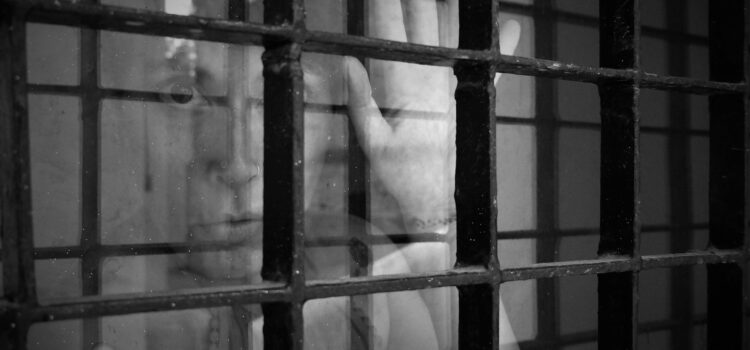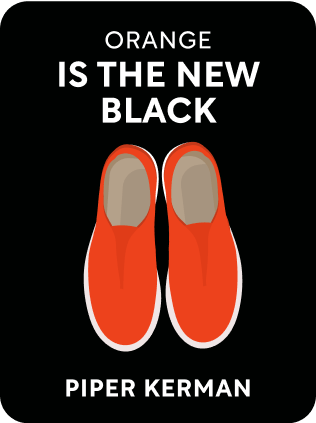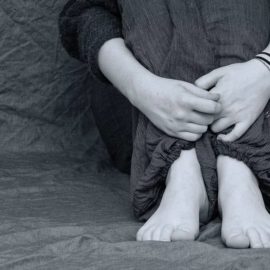

This article is an excerpt from the Shortform summary of "Orange Is The New Black" by Piper Kerman. Shortform has the world's best summaries of books you should be reading.
Like this article? Sign up for a free trial here .
What was Piper Kerman’s jail time like? Why did Piper Kerman go to jail, and how long was she there for?
For Piper Kerman, jail was a defining experience in her life. And though jail was difficult, she made friends there who helped her get through it.
Read more about Piper Kerman, jail, and her life at Danbury Prison.
Piper Kerman’s Jail Friendships
For Piper Kerman, jail was an experience she never thought she’d have. One of the things that first struck Piper was how much race determined and defined the culture at Danbury. Segregation was the unwritten rule behind bars—although there were some exceptions, most people hung out in racially homogenous groups, with little intermingling across racial lines. In these early days of her prison sentence, most of Piper’s friends were white, predominantly Italian-American. The prison officials reinforced this by lumping racial groups together into the same cell blocks, which, characteristically, bore stereotyped names (“Spanish Harlem” for the Latina inmates, “The Ghetto” for the African-American inmates).
She saw the racial solidarity during her first days at camp, when a series of white inmates gifted Piper various provisions from the commissary, because they knew that she didn’t yet have the money to purchase anything. This, Piper learned, was a ritual performed by all the racial groups at Danbury with new arrivals. Piper Kerman’s jail time was made easier by friends she made, and the community she formed.
In conversations with other women, Piper saw that they freely discussed one another’s lengths of imprisonment. She was baffled by the seeming randomness of different inmate sentences, as women convicted of similar offenses often received wildly divergent punishments. It was also clear that there was racial bias built into the criminal justice system, as women of color tended to have disproportionately harsher sentences than white inmates who’d committed similar offenses. Piper Kerman’s jail experience opened her eyes to many inequalities in the justice system.
She befriended a group of women, including Nina, Rosemarie, Annette, and Yoga Janet, an older hippie who organized yoga classes in the recreation room at the prison. This clique of women kept an eye out for Piper, easing her transition to prison life and coaching her through the dizzying rules and regulations—both official and unofficial. The consequences of violating this code could vary from being mocked to having one’s visiting privileges revoked to even being sent to solitary confinement in the segregated housing unit (SHU) for an indeterminate period of time.
Piper saw that prison life really was a series of “chickenshit rules enforced by chickenshit people.” Much of the day-to-day experience consisted of standing in line, whether it was to eat, receive mail, shower (in maggot-infested stalls with notoriously unreliable hot water), or be counted by the COs. Many of the women who came from less-privileged backgrounds than Piper knew this dehumanizing experience all too well, having dealt with the welfare, public housing, drug treatment, and juvenile criminal justice bureaucracies all their lives. For Piper Kerman, jail was temporary. For many women, it was all they knew.
Piper found herself clinging to daily rituals and routines in an effort to regain some agency and mastery over her life—giving herself some power and control in a situation where she otherwise had none. So she would make her coffee the same way every morning; sit in the yard at her usual spot; and talk with Nina. She internalized the old prison mantra: do your time, don’t let your time do you.
Piper was relieved and grateful to have a community that took an interest in her well-being and helped soften the blow of prison. Even small acts of kindness, such as when Nina made Piper a root beer float (made by pouring cans of root beer into a coffee cup and dumping scoops of generic commissary ice cream into it), went a long way toward easing her crushing homesickness.
Receiving Emotional Support
For the first few days at Danbury, Piper lived in “the Rooms.” These were dormitories where new inmates lived until they could be assigned permanent housing. Also in the Rooms were inmates who were pregnant, chronically ill, or otherwise unable to live in the general population.
Each day, Piper’s jail experience taught her something new and strange about prison—and about the women with whom she was serving time. One inmate, she learned, was a nun. This woman had been locked up for organizing anti-war protests at Department of Defense facilities. Piper’s clique of predominantly Italian-American, Catholic inmates were outraged that the Bureau of Prisons (BOP) would actually incarcerate a member of the clergy.
Despite making friends, Piper was still new to prison life, blinded by her privilege, and capable of putting her foot in her mouth. One day at mealtime during her first week at Danbury, Piper made a wisecrack about how the inmates should organize a hunger strike to protest the bad food. Pop, a Russian-American inmate who sat high atop the prison social pyramid (and who also ran the kitchen whose food Piper was insulting), dressed Piper down. Pop told Piper never to make jokes about that, because another inmate might tell a CO that she was trying to incite a riot, which could land Piper in the SHU. It was a lesson to Piper—watch what you say, and watch who you’re talking to.
But there was something to look forward to—Larry’s visit that weekend. Piper could hardly contain her emotion upon seeing him in the visiting room, though the physical contact she could have with him was severely limited by BOP rules. Although it had only been a few days, it already felt like a lifetime since she’d seen him. Piper also noticed children in the visiting area, coming to see their incarcerated mothers. It was a humbling reminder that she was not the only one whose family had been impacted by prison.
It was not just Larry who was offering Piper emotional support from the outside. She was struck by the outpouring of sympathy and love from friends and family who sent her books and letters on a near-constant basis. The books did somewhat single her out as a privileged intellectual and outsider among the other inmates, not to mention the fact that many of her fellow prisoners simply lacked the kind of outside social and emotional support systems that Piper had.
Piper needed to overcome some of her own subconscious prejudices. One day, a black inmate named Rochelle asked Piper if she could borrow one of her books. Piper was ashamed to discover that she harbored racialized fears that Rochelle would steal her book (Piper also felt racist for having instinctively given Rochelle a book by black author Zora Neale Hurston, as if that was the only kind of literature she could possibly enjoy). When Rochelle returned it a week later, Piper mentally chided herself for assuming the worst about Rochelle. She saw that she had much to learn about humility—after all, how was she any different than these other women?
Still, Piper was immensely grateful to have so many people who cared about her. She even received materials from friends of friends, people she’d never met, who wanted to correspond with her and show their solidarity.

———End of Preview———
Like what you just read? Read the rest of the world's best summary of Piper Kerman's "Orange Is The New Black" at Shortform .
Here's what you'll find in our full Orange Is The New Black summary :
- The real, more nuanced story behind the hit TV show
- How upper-class Piper Kerman landed in prison on drug charges
- The key lessons Kerman learned about society and herself






